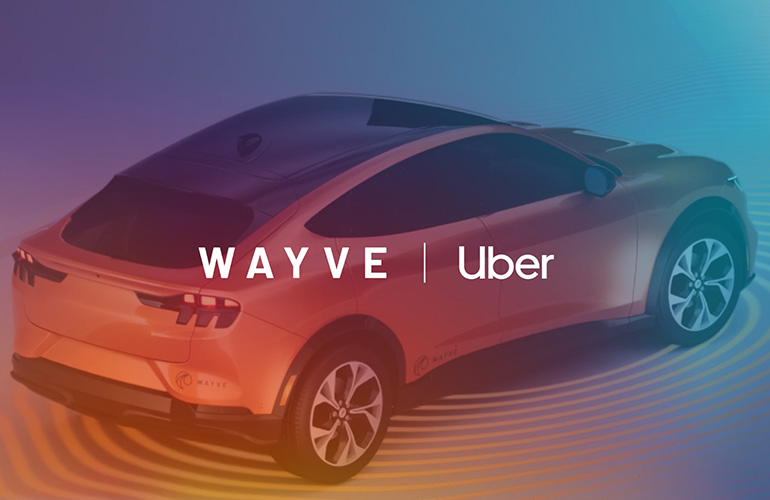|
Listen to this article |

Wayve has established a strategic partnership with Uber, which includes Uber investing in the company. | Source: Wayve
Most self-driving vehicle developers, like Cruise and Waymo, meticulously map the areas their robotaxis will drive in. These maps are constantly updated, and the vehicles that use them are limited to mapped areas. Wayve, a developer of embodied AI for autonomous vehicles, hopes to take a different approach. The company today announced a new strategic partnership with Uber.
Uber has also agreed to make a strategic investment in Wayve as an extension of the company’s previously announced Series C funding round. With the additional support, Wayve said it intends to accelerate its work with global OEMs to enhance consumer vehicles with SAE Level 2+ advanced driver-assistance systems (ADAS) and Level 3 automated driving capabilities.
The London-based company said it is also developing Level 4 autonomous vehicles (AVs) for future deployment on Uber‘s ride-hailing platform.
“Uber and Wayve share a vision of reimagining mobility for the better,” stated Dara Khosrowshahi, CEO of Uber. “Wayve’s advanced embodied AI approach holds a ton of promise as we work towards a world where modern vehicles are shared, electric, and autonomous. We’re thrilled to bring Wayve on as a partner to work alongside automakers as we continue to build out Uber as the best network for self-driving vehicles.”
Wayve and Uber plan for self-driving fleets at scale
Unlike traditional AV approaches, Wayve has focused on “mapless, end-to-end” artificial intelligence. The company designed this technology to allow automated vehicles to operate without geofenced limits.
“Wayve is building a ‘general purpose’ driving Al that can power all levels of driving automation in any type of vehicle, anywhere in the world,” said Alex Kendall, co-founder and CEO of Wayve.
Founded in 2017, the company is backed by investors including SoftBank Group, NVIDIA, and Eclipse Ventures.
The partners said they envision future Wayve-powered vehicles being available on the Uber network in multiple markets around the world. This would bring self-driving technology to Uber’s more than 150 million monthly global users.
“I’m excited to be teaming up with Uber, the largest mobility network in the world, to massively ramp up our AI’s fleet learning, ensuring our AV technology is safe and ready for global deployment across Uber’s network,” added Kendall. “Together, we’re excited to work with automotive OEMs to bring autonomous driving technologies to consumers sooner.”
Uber makes many investments in autonomy
Wayve isn’t the first self-driving company that Uber has partnered with. In May 2023, Waymo, the self-driving unit of Alphabet, announced a multi-year partnership to make the Waymo Driver available on Uber starting in Phoenix. Typically, riders can hail Waymo robotaxis directly through Waymo’s app.
Uber also signed a 10-year commercial agreement with Motional in 2022. The companies planned to offer fully driverless rides with Motional’s IONIQ 5-based robotaxis, with rides starting before the end of 2022. Motional also delivers with Uber Eats in California.
But Uber isn’t just interested in investing in robotaxis. In November 2021, it partnered with Serve Robotics, a robotic sidewalk delivery company. Serve and Uber’s commercial agreement allows Serve to deploy its robots on Uber Eats in multiple markets across the U.S., with up to 2,000 Serve robots to be deployed.
Uber has even invested in autonomous trucking initiatives. In June, Waabi brought in $200 million in an oversubscribed Series B round that Uber led. Waabi claimed that it “is on the verge of Level 4 autonomy” and that it expects to deploy fully autonomous trucks in Texas next year. The company has an ongoing partnership with Uber Freight.

